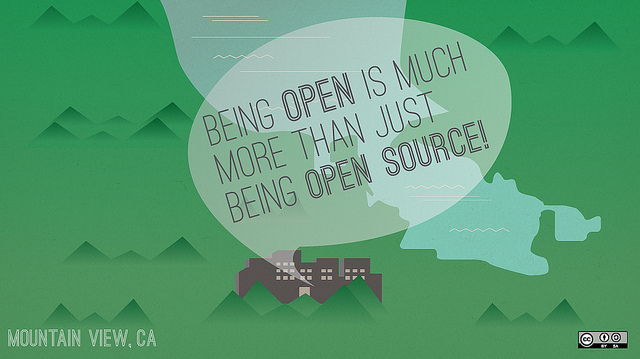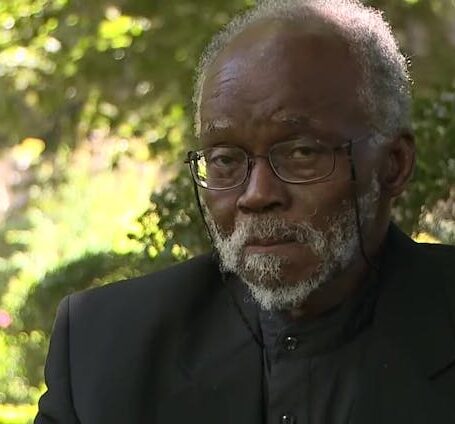Please Take A More Open View Of Openness

A slide from a presentation about the Mozilla approach sums up an important concept.
Openness will require some definition before we proceed. One definition of openness might be ‘for the many, not the few,’ as typified by notions of the public good. Open access has a strong case on these terms alone, irrespective of how limited any public utility might seem to those producing esoteric literature. Another definition might include ideas of multiple party involvement, in contrast to single party ownership. From this perspective, open access creates the potential for new utopias of collaboration and co-creation of knowledge. Thirdly, openness might simply be defined as the opposite of a certain form of ‘closed-ness,’ in which form, content, innovation, communication, benefit and critique are closely circumscribed and controlled by a guild of experts. Such closed-ness is typical of lay criticism of the academy as irrelevant.

This piece by Ben Johnson originally appeared on the LSE Impact of Social Sciences blog as “To argue against open access on the grounds that it damages the reach of research is to undersell research” and is reposted under the Creative Commons license (CC BY 3.0).
Each of these aspects has, at some point, encountered strong objections from particular voices within the academy when applied to research. While one ought not to be tempted to knock down straw men when invited to do so, rebuttals are often voiced by those wishing to compare and contrast the more discursive disciplines with those more deeply rooted in the scientific method. In treating each aspect of this definition in turn, we may start to see a bigger picture.
It is somewhat axiomatic that the intellectual pursuits of academics are mercifully free from questions of personal gain; indeed, it is argued that the purpose of the academy is to create the space to nurture such freedoms. However, it is also true that the driving force of self-interest is far from absent from the research world, ranging from the practices of attribution of knowledge discovery to individuals to the vagaries of Cornford’s 1908 Microcosmographia Academica. The process of knowledge dissemination straddles both worlds, in that it is through publication that one converts freely pursued research into personal attribution and credit. Though it is perhaps tempting to reduce the academy in this way, to do so entirely ignores the other side of the dissemination equation: the reader. To ignore the importance of the reader to the publication process is to reduce it to its most venal status, and academia itself becomes meanly extrapolated to a neat irrelevance.
Public funders of research, of course, cannot ignore the reader. We have the right to demand that the research we fund can fulfil its greatest potential relevance, and we have the right to place the burden of responsibility to achieve this on those being funded. Open access is an obvious way to do this, but in making research outputs more openly available, policymakers may entirely respect and preserve the symbiosis of academic freedom and credit: open access can (and I believe should) work within these parameters. HEFCE’s open access policy, with its generous exceptions, shows that it is possible to do this, and in this way, research may be more successfully conducted for the benefit of the many, as well as the few, and in ways that are entirely compatible with the economies of individual benefit.
It is also somewhat axiomatic that the new technologies of the Internet create the potential for new forms of creativity. Openness, through location-independent research and liberated reuse of material, can create new paradigms of co-creation and co-authorship. Such paradigms are often seen equally as enticing and threatening: academics working together and collaborating on new forms of open research have the potential to achieve much more than those working alone, but if this became too widespread it might threaten the highly plural nature of research demanded by the relativist epistemologies of certain disciplines.
Likewise, open access promises to liberate ‘content’ from the strictures of form, allowing maximal use and reuse of material – potentially toward an eventual abandonment of the clearly delineated research artefact. This liberation of research could potentially eradicate the delays present in the current, quantised, artefact-driven research process. But it may also undermine the status of attribution and the integrity of well-established scholarly forms and practices.
Such tensions are part and parcel of the open access debate, and their nature and provenance must be understood fully before we take bold steps to drive new paradigms. It is in this context that a layered understanding of open access is useful: well-established and defined criteria for access to material as its core; more liberated types of openness on top. A layered understanding of open access can be used to encourage innovative, intelligent and careful steps towards openness within the academy. HEFCE’s open access policy aims to do just that.
The very idea of the open academy challenges the assumptions and motivations of some scholars, and open access is perhaps resisted so vociferously precisely because it is seen as disruptive
The third aspect of openness that I want to deal with is that it may act as the antidote to destructive circumscription of academic impact. If we make the mistake of conflating the reach of particular publication venues with their prestige, we not only make a fundamental underestimate of the benefits of open access to individual research artefacts, but we also lose sight of the main goal of public research: the creation of new knowledge and insight for the benefit of all. If we preserve the academic ‘guild’ at the expense of the public benefit it brings, then we have set on a course firmly away from the ideal. It is unimaginative and self-interested, and one can well argue that public money should not prop it up. I’d like to believe that the publicly funded academy can make a better case for its continued existence.
Finally, to the fourth dimension of openness: connection. There is no doubt that ‘impact’ is becoming a more pressing agenda for governments, institutions and funders, and is indeed perceived by some as a pernicious influence on academia. While one would expect research funders to argue strongly against such a perception, I believe there is value in academics adopting a more subtle view of impact. The ‘reach’ of research must be seen as fundamentally bound up with notions of openness, not just the passive openness of research publications, but also the active processes of public engagement, influence over public life, and imaginative application of research in new ways that ‘connected openness’ implies.
There are tremendous opportunities for academics in all disciplines to reach out and make a difference on wider society – to see the work being done by researchers as so esoteric that it surely has little or no value outside the academy is simply wrong-headed. It just requires a little imagination, and encouragement, to see the opportunities for research impact and application, and then to actively pursue them. Making research publications openly available to all who might want to read them is just one dimension of this, and to argue against open access on the grounds that it damages the reach of research is, quite simply, to undersell research.
In sum, questions of openness extend far beyond the effects of technology on the publication of research materials; the very idea of the open academy challenges the assumptions and motivations of some scholars, and open access is perhaps resisted so vociferously precisely because it is seen as disruptive to these. In my view, academics must move beyond this resistance: they have so much to gain from greater openness, and so much to lose by staying closed off from the world.































































































